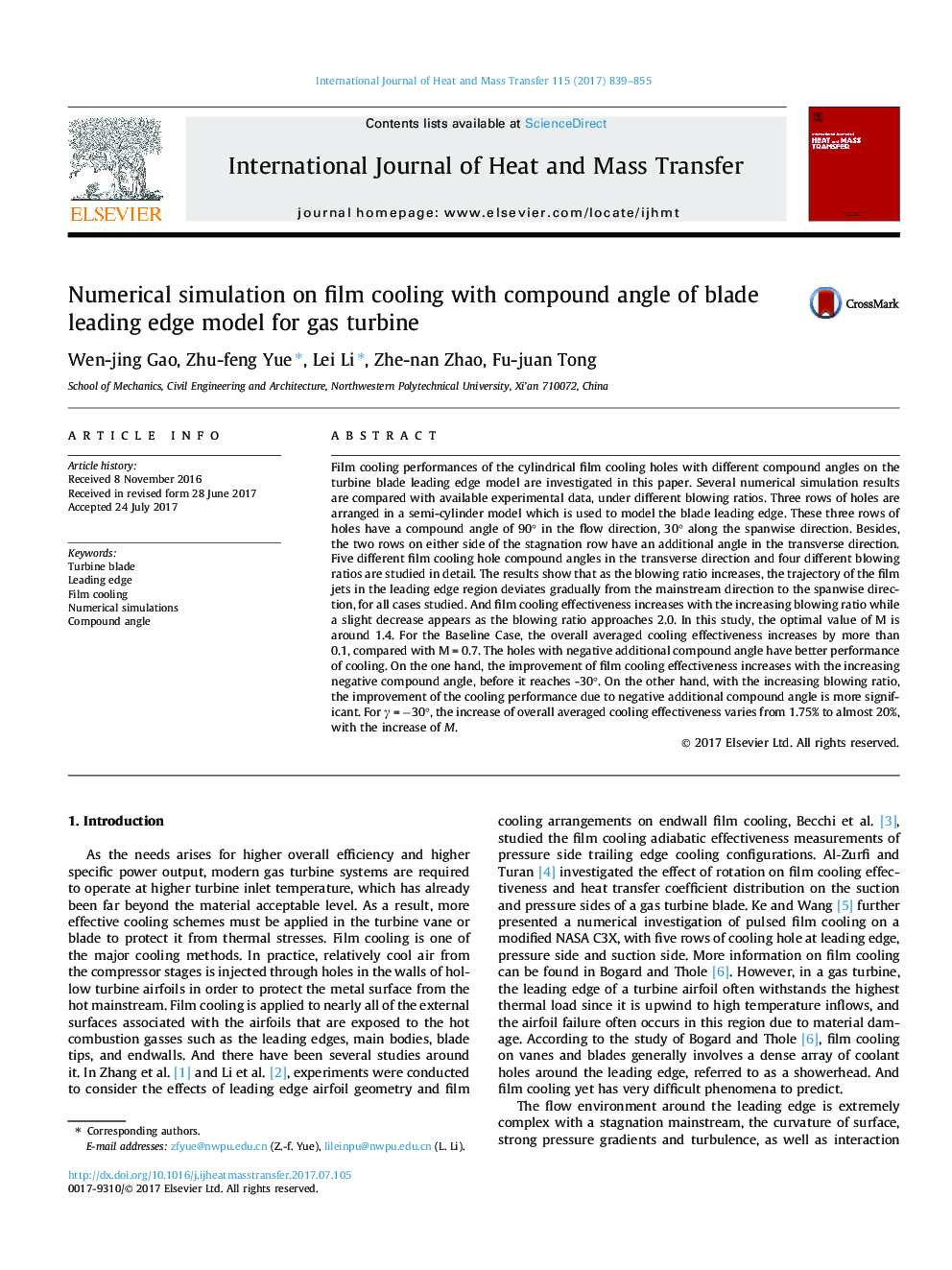| کد مقاله | کد نشریه | سال انتشار | مقاله انگلیسی | نسخه تمام متن |
|---|---|---|---|---|
| 4993514 | 1458026 | 2017 | 17 صفحه PDF | دانلود رایگان |
عنوان انگلیسی مقاله ISI
Numerical simulation on film cooling with compound angle of blade leading edge model for gas turbine
ترجمه فارسی عنوان
شبیه سازی عددی در خنک سازی فیلم با زاویه اتصال مدل پیشرو تیغه توربین گاز
دانلود مقاله + سفارش ترجمه
دانلود مقاله ISI انگلیسی
رایگان برای ایرانیان
کلمات کلیدی
تیغه توربین، لبه پیشرو، خنک کننده فیلم، شبیه سازی عددی، زاویه ترکیب
موضوعات مرتبط
مهندسی و علوم پایه
مهندسی شیمی
جریان سیال و فرایندهای انتقال
چکیده انگلیسی
Film cooling performances of the cylindrical film cooling holes with different compound angles on the turbine blade leading edge model are investigated in this paper. Several numerical simulation results are compared with available experimental data, under different blowing ratios. Three rows of holes are arranged in a semi-cylinder model which is used to model the blade leading edge. These three rows of holes have a compound angle of 90° in the flow direction, 30° along the spanwise direction. Besides, the two rows on either side of the stagnation row have an additional angle in the transverse direction. Five different film cooling hole compound angles in the transverse direction and four different blowing ratios are studied in detail. The results show that as the blowing ratio increases, the trajectory of the film jets in the leading edge region deviates gradually from the mainstream direction to the spanwise direction, for all cases studied. And film cooling effectiveness increases with the increasing blowing ratio while a slight decrease appears as the blowing ratio approaches 2.0. In this study, the optimal value of M is around 1.4. For the Baseline Case, the overall averaged cooling effectiveness increases by more than 0.1, compared with M = 0.7. The holes with negative additional compound angle have better performance of cooling. On the one hand, the improvement of film cooling effectiveness increases with the increasing negative compound angle, before it reaches -30°. On the other hand, with the increasing blowing ratio, the improvement of the cooling performance due to negative additional compound angle is more significant. For γ = â30°, the increase of overall averaged cooling effectiveness varies from 1.75% to almost 20%, with the increase of M.
ناشر
Database: Elsevier - ScienceDirect (ساینس دایرکت)
Journal: International Journal of Heat and Mass Transfer - Volume 115, Part A, December 2017, Pages 839-855
Journal: International Journal of Heat and Mass Transfer - Volume 115, Part A, December 2017, Pages 839-855
نویسندگان
Wen-jing Gao, Zhu-feng Yue, Lei Li, Zhe-nan Zhao, Fu-juan Tong,
